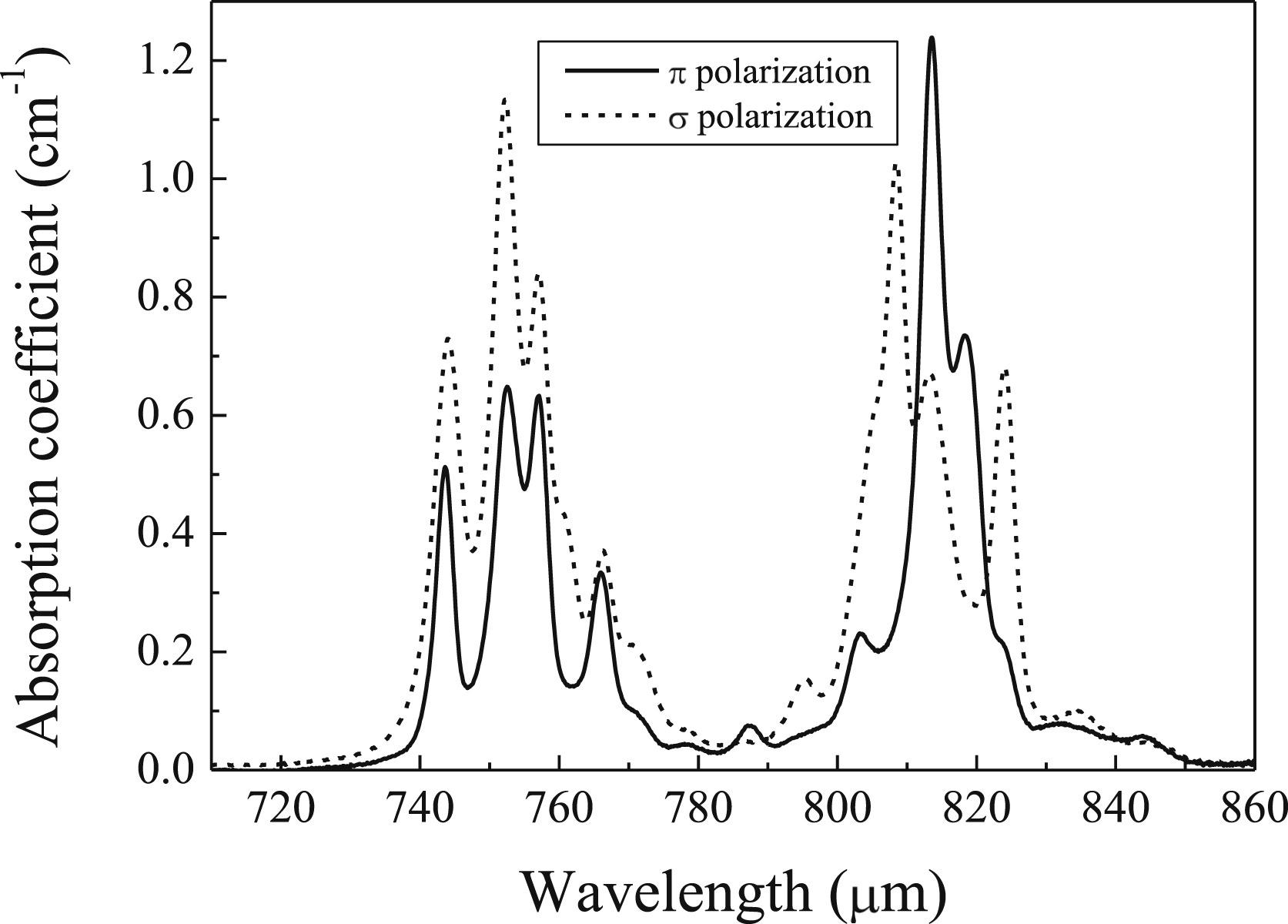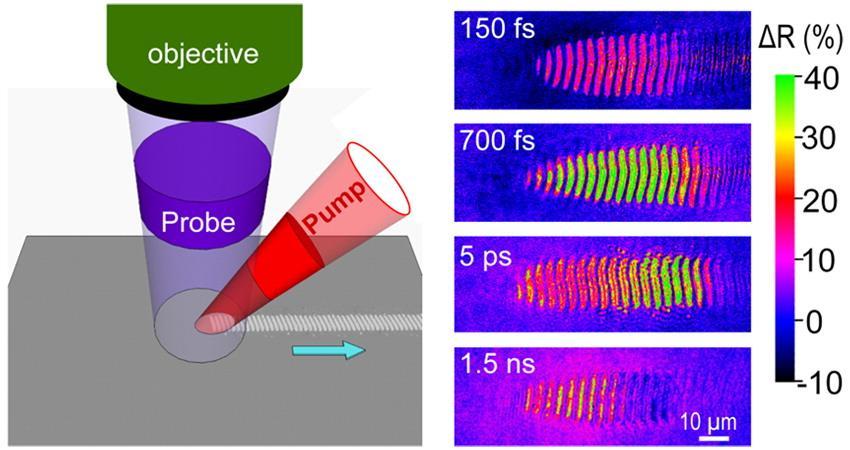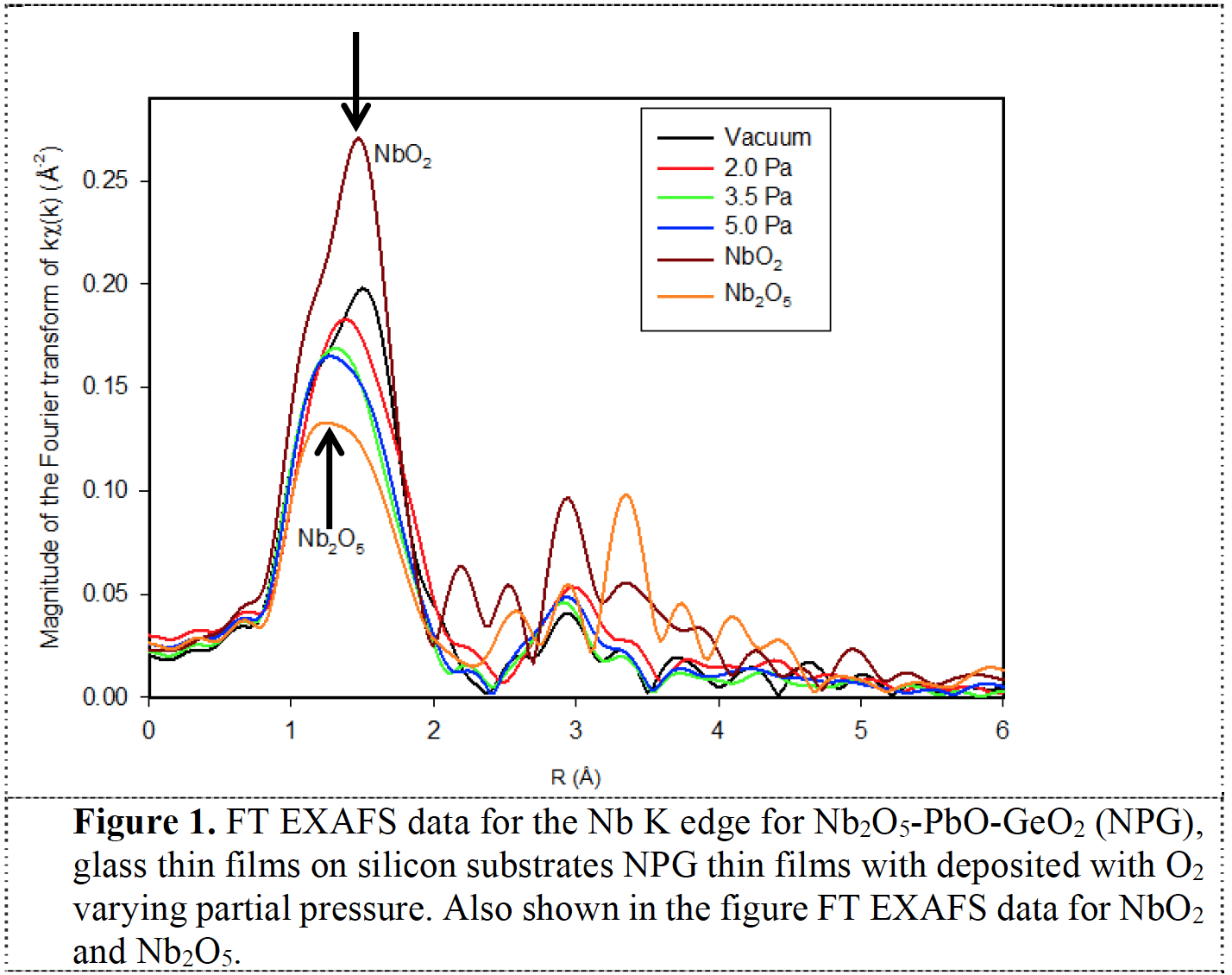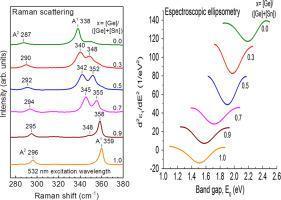2016 publications

All-Optical Nanometric Switch Based on the Directional Scattering of Semiconductor Nanoparticles
Abstract
A structure based on a dimer of silicon nanoparticles, presenting directional scattering in the visible range, was studied as a new design of an all-optical switch. The combination of spherical nanoparticles satisfying, at the same incident wavelength, the zero-backward and the minimum-forward scattering conditions can produce either a maximum or a minimum of the scattered field in the area between the nanoparticles. The modulation of the incident wavelength can be used as a switching parameter due to the sensitivity of these conditions to it. An optimization of the dimer setup, both in the distance between the nanoparticles and the incident wavelength, was numerically performed to obtain a maximum contrast. Also, near-field and far-field distributions of the electric field have been considered.

Mid-infrared surface plasmon polariton chemical sensing on fiber-coupled ITO coated glass
Abstract
A novel fiber-coupled indium tin oxide (ITO) coated glass slide sensor for performing surface plasmon polariton chemical monitoring in the ∼3.5 μm mid-infrared (IR) range is reported. Efficient mid-IR fiber coupling is achieved with 3D laser written waveguides, and the coupling of glass waveguide modes to ITO surface plasmon polaritons (SPPs) is driven by the varying phase matching conditions of different aqueous analytes across the anomalous dispersion range determined by their molecular fingerprints. By means of using both a mid-IR fiber supercontinuum source and a diode laser, the excitation of SPPs is demonstrated. The sensor sensitivity is tested by discriminating CH from OH features of ethanol in water solutions, demonstrating an instrumental ethanol limit of detection of 0.02% in a wide concentration range of at least 0%–50%. The efficient optical monitoring of mid-IR SPPs in smart glass could have a broad range of applications in biological and chemical sensing.

Ridge waveguide laser in Nd:LiNbO3 by Zn-diffusion and femtosecond-laser structuring
Abstract
Ridge waveguide lasers have been fabricated on Nd doped LiNbO crystals. The fs-laser writing technique was used to define ridge structures on a gradient-index planar waveguide fabricated by Zn-diffusion. This planar waveguide was formed in a z-cut LiNbO substrate homogeneously doped with a 0.23% of Nd ions. To obtain lateral light confinement, the surface was then micromachined using a multiplexed femtosecond laser writing beam, forming the ridge structures. By butting two mirrors at the channel waveguide end-facets, forming a waveguide laser cavity, TM-polarized laser action at 1085 nm was achieved by end-fire TM-pumping at 815 nm. The waveguide laser shows a threshold of 31 mW, with a 7% of slope efficiency. © 2016 Elsevier B.V. All rights reserved

Ultrafast Moving-Spot Microscopy: Birth and Growth of Laser-Induced Periodic Surface Structures
Abstract
Laser-induced periodic surface structures (LIPSS) are a universal phenomenon observed in all classes of solid materials, giving rise to a variety of self-assembled subwavelength structures with different symmetries. These promising features have opened new opportunities for laser structuring of materials in a wide range of applications, including plasmonics, nanophotonics, nanoelectronics, sensing, and even mechanics. However, there is an ongoing debate about the formation mechanism of LIPSS, and the current picture stems mainly from the combined effort of theoretical modeling and experimental studies of the final structures produced. Here we demonstrate femtosecond-resolved imaging of the formation process of such structures produced by ultrashort laser pulses in silicon. The particular type of LIPSS studied are well-aligned amorphous–crystalline fringes generated in dynamic processing conditions, whose period can be tuned and which can be extended over large areas. Using a moving-spot, multiple-pulse irradiation approach we are able to spatially and temporally resolve the birth and growth of individual fringes. We demonstrate that the formation process is initiated by free electron generation leading to nonthermal melting, liquid phase overheating, and rapid solidification into the amorphous phase.
Femtosecond laser-controlled self-assembly of amorphous-crystalline nanogratings in silicon
Abstract
Self-assembly (SA) of molecular units to form regular, periodic extended structures is a powerful bottom-up technique for nanopatterning, inspired by nature. SA can be triggered in all classes of solid materials, for instance, by femtosecond laser pulses leading to the formation of laser-induced periodic surface structures (LIPSS) with a period slightly shorter than the laser wavelength. This approach, though, typically involves considerable material ablation, which leads to an unwanted increase of the surface roughness. We present a new strategy to fabricate high-precision nanograting structures in silicon, consisting of alternating amorphous and crystalline lines, with almost no material removal. The strategy can be applied to static irradiation experiments and can be extended into one and two dimensions by scanning the laser beam over the sample surface. We demonstrate that lines and areas with parallel nanofringe patterns can be written by an adequate choice of spot size, repetition rate and scan velocity, keeping a constant effective pulse number (N ) per area for a given laser wavelength. A deviation from this pulse number leads either to inhomogeneous or ablative structures. Furthermore, we demonstrate that this approach can be used with different laser systems having widely different wavelengths (1030 nm, 800 nm, 400 nm), pulse durations (370 fs, 100 fs) and repetition rates (500 kHz, 100 Hz, single pulse) and that the grating period can also be tuned by changing the angle of laser beam incidence. The grating structures can be erased by irradiation with a single nanosecond laser pulse, triggering recrystallization of the amorphous stripes. Given the large differences in electrical conductivity between the two phases, our structures could find new applications in nanoelectronics.

Melt front propagation in dielectrics upon femtosecond laser irradiation: Formation dynamics of a heat-affected layer
Abstract
Several studies in dielectrics have reported the presence of a thin heat-affected layer underneath the ablation crater produced by femtosecond laser irradiation. In this work, we present a time-resolved microscopy technique that is capable of monitoring the formation dynamics of this layer and apply it to the study of a phosphate glass exposed to single pulses below the ablation threshold. A few nanoseconds after laser excitation, a melt front interface can be detected, which propagates into the bulk, gradually slowing down its speed. By means of image analysis combined with optical modeling, we are able to determine the temporal evolution of the layer thickness and its refractive index. Initially, a strong transient decrease in the refractive index is observed, which partially recovers afterwards. The layer resolidifies after approximately 1 μs after excitation, featuring a maximum thickness of several hundreds of nanometers.
This work has been partially supported by the Spanish TEC2014-52642-C2-1-R project. M.G.-L. acknowledges the FPU grant awarded by the Spanish Ministry of Education.

Er3+-doped fluorotellurite thin film glasses with improved photoluminescence emission at 1.53 µm
Abstract
Transparent oxyfluoride tellurite thin film glasses have been produced at room temperature by pulsed laser deposition in O2 atmosphere from an Er-doped TeO2–ZnO–ZnF2 bulk glass. Thin film glasses present high refractive index (n≥1.95) and good transparency (T≥80%) in the visible (λ>400 nm) and near infrared range. However, their photoluminescence (PL) performance at 1.5 μm is poor. Thermal annealing at moderate temperatures (T≤315 °C), well below glass crystallization, increases the PL intensity by more than one order of magnitude as well as the PL lifetime up to τ≈3.3 ms. Film glasses present a larger fraction of TeO3 trigonal pyramids than the bulk glass and a very large OH− content. The structure and composition of film glasses do not change upon annealing and thus the activation of the PL response is related to the improvement of the surface morphology and the significant decrease of their OH− content. & 2015ElsevierB.V.

Subtle local structural variations in oxygen deficient niobium germanate thin film glasses as revealed by x-ray absorption spectroscopy
Abstract
The local electronic and crystal structure of niobium-lead-germanate, Nb2O5-PbO- GeO2 (NPG), glass thin films on silicon substrates were probed by XANES and EXAFS. NPG glasses are promising candidates for applications in nonlinear optical devices because they exhibit interesting optical characteristics such as high nonlinear third order optical susceptibility. In this work NPG glasses were prepared with pulsed laser deposition method with varying oxygen partial pressure to induce thin films with different oxygen stoichiometry. Previously, it was shown that oxygen stoichiometry has a very important effect to produce unusual high optical susceptibility. Detailed EXAFS and XANES analyses in a series of NPG thin films revealed the subtle variations in the local environment around Nb atoms and the Nb oxidation states caused by oxygen deficiencies.

Synthesis of transparent Er-doped fluorotellurite glass-ceramics through controlled crystallization
Abstract
This work presents a detailed study of the preparation and microstructure of transparent glass–ceramics obtained from a TeO2−ZnO−ZnF2 fluorotellurite glass doped with ErF3. The determination of nucleation and crystal growth rate-like curves allows establishing a narrow temperature range (340–350 °C) for a controlled crystallization. Thereafter, a crystalline phase was grown through a two-step heat treatment: 10–20 h at a temperature slightly above the glass transition temperature, followed by a 2.5–3 h treatment at 340 °C. Structural analysis showed the nucleation of ErF3 nanocrystals (NCs) with a typical size of ≈50 nm that were homogeneously distributed in the glass matrix. The resulting glass–ceramic material remains highly transparent, with a small crystalline to amorphous ratio; yet the presence of ErF3 NCs has a large impact on the photoluminescence response of Er3+ ions. Upconverted visible emission is analyzed under 980 nm excitation: red emission from the 4F9/2 level is dramatically enhanced with respect to green 2H11/2, 4S3/2 → 4I15/2 hypersensitive transitions. The observed behaviour is attributed to the presence of Er3+ ions in the NCs, which are sites with lower phonon energy than the glass matrix. Moreover, the shorter inter-ionic distance between Er3+ ions in the NCs eases energy transfer between them.

Pulsed laser deposition of rare-earth doped glasses: a step toward lightwave circuits
Abstract
The successful migration from electronic to photonic devices relies on the fabrication and integration of multiple optical components, including active devices such as lasers or amplifiers, on a common planar substrate to reduce their size, cost and power consumption, while maintaining their compatibility with the current fiber technology. Doped glasses are among the most promising materials for the development of active integrated devices due to their excellent optical properties and ease of preparation at a reasonable cost. Yet, their application requires first the fabrication of high quality thin films a few microns thick with good photoluminescence performance. In this contribution we will show that pulsed laser deposition (PLD) is very attractive for this purpose, since it allows the synthesis of metastable phases of complex oxides in thin film configuration as well as their nanostructuration through the incorporation of rare earth (RE) ions as functionalizing elements. Thus, opening a realm of material function and design possibilities. We will review how alternate PLD allows the synthesis of nanostructured film glasses with a controlled RE concentration and an in-depth distribution that can be predesigned at the nanometer scale. This approach will be illustrated in the case of germanate and tellurite film glasses doped and co-doped with different RE ions. We will focus on the experimental parameters that have a direct impact on the concentration and distribution of RE ions and their effect on the photoluminescent properties and, finally, their potential in light amplification applications will be discussed.

Polaritonic-to-Plasmonic Transition in Optically Resonant Bismuth Nanospheres for High-Contrast Switchable Ultraviolet Meta-Filters
Abstract
In the quest to unveil alternative plasmonic elements overcoming noble metals for selected applications in photonics, we investigate, by numerical simulations, the near ultraviolet (UV)-to-near infrared optical response of solid and liquid Bi nanospheres embedded in a dielectric matrix. We also determine the resulting transmission contrast upon reversible solid-liquid phase transition to evaluate their potential for switchable optical filtering. The optical response of the solid (liquid) Bi nanospheres is ruled by localized polaritonic (plasmonic) resonances tunable by controlling the diameter. For a selected diameter between 20 and 50 nm, both solid and liquid nanospheres present a dipolar resonance, inducing a strong peak extinction in the near UV, however, at different photon energies. This enables a high transmission contrast at selected near UV photon energies. It is estimated that a 2-D assembly of 30-nm solid Bi nanospheres with a surface coverage of 32% will almost totally render extinct (transmission of 2%) a near UV 3.45-eV (359 nm) light beam, whereas upon phase transition, the resulting liquid Bi nanospheres will show a transmission of 30%. This paper is appealing for the fabrication of locally reconfigurable optical metamaterials for integrated switchable near-UV optics. Ó 2016 IEEE

Ultraviolet-visible interband plasmonics with p-block elements
Abstract
We investigate the origin of the ultraviolet – visible plasmonic properties of three elemental materials from the p-block: Bi, Sb and Ga, which has not been discussed so far despite growing interest in these materials for plasmonic applications. We review and analyze a broad range of optically-determined dielectric functions ε = ε + jε of these elemental materials available in the literature, covering a wide photon energy range (from 0.03 to 24 eV). It is shown that the contribution of free carriers to ε in the ultraviolet – visible is negligible for Bi and Sb and small for Ga. In contrast, the interband transitions of these elemental materials show a high oscillator strength that yields a strong negative contribution to ε in the ultraviolet – visible. Therefore it is proposed that, in nanostructures made of these elemental materials, the interband transitions induce localized surface plasmon-like resonances in the ultraviolet – visible. It is exemplified how these resonances are sensitive to the size and environment of the nanostructures. Furthermore, ultraviolet – visible plasmonic properties achieved through interband transitions, without free carrier excitation, are especially appealing because they might be tuned through the tailoring of the band structure and by the occupancy of electronic states. Therefore they are promising for the development of broadly tunable nanostructures and metamaterials. ©2016 Optical Society of America

Preparation and broadband white emission of Eu-doped thin films based on SiAlON
Abstract
The optical performance of europium (Eu) doped SiAlON thin films and its preparation by pulsed laser deposition are studied. The undoped SiAlON films show a high refractive index (2.34) close to that of silicon nitride. After doping with Eu the oxygen content increases in the films and leads to the formation of an oxynitride with a refractive index of 1.87 and excellent transparency in the visible-near infrared. Upon excitation at 355 nm the films show a broad band (FWHM of 200 nm) emission in the visible range (400–750 nm) that is associated to the emission of the Eu in the 2+ oxidation state. Enhancement of the emission together with a blue spectral shift has been found when the films are annealed at low temperature (600 °C). These films show promising properties for the development of Si compatible thin films integrated emitters.

Tuning Eu3+ emission in europium sesquioxide films by changing the crystalline phase
Abstract
We report the growth of europium sesquioxide (EuO) thin films by pulsed laser deposition (PLD) in vacuum at room temperature from a pure EuO ceramic bulk target. The films were deposited in different configurations formed by adding capping and/or buffer layers of amorphous aluminum oxide (a-AlO). The optical properties, refractive index and extinction coefficient of the as deposited EuO layers were obtained. X-ray photoelectron spectroscopy (XPS) measurements were done to assess its chemical composition. Post-deposition annealing was performed at 500 °C and 850 °C in air in order to achieve the formation of crystalline films and to accomplish photoluminescence emission. According to the analysis of X-ray diffraction (XRD) spectra, cubic and monoclinic phases were formed. It is found that the relative amount of the phases is related to the different film configurations, showing that the control over the crystallization phase can be realized by adequately designing the structures. All the films showed photoluminescence emission peaks (under excitation at 355 nm) that are attributed to the intra 4f-transitions of Eu ions. The emission spectral shape depends on the crystalline phase of the EuO layer. Specifically, changes in the hypersensitive D → F emission confirm the strong influence of the crystal field effect on the Eu energy levels.© 2015 Elsevier B.V

Modeling of the refractive index and composition of luminescent nanometric chlorinated-silicon nitride films with embedded Si-quantum dots
Abstract
The refractive index of nanometric (<100 nm) chlorinated-silicon nitride films with embedded silicon quantum dots, prepared by remote plasma enhanced chemical vapor deposition was investigated by spectroscopic ellipsometry. The complex refractive indexes and thicknesses of the films were obtained from the ellipsometric measurements using the Cauchy model. The chemical composition of the bulk of the films, including the hydrogen, chlorine, and oxygen content, was measured by elastic forward analysis (EFA) and X-ray photoelectron spectroscopy (XPS). The EFA and XPS results indicate that the films are composed of nearly stoichiometric silicon nitride (SiN) with different amounts of hydrogen, chlorine, and oxygen, and that their top surface is oxidized. Based on the composition results the refractive index of the films was fitted using the effective medium approximation considering the system: Si substrate + SiN + Si + voids + top ultrathin oxidized surface layer. Published by AIP Publishing

Wide band-gap tuning Cu2ZnSn1−xGexS4 single crystals: Optical and vibrational properties
Abstract
The linear optical properties of Cu2ZnSn1−xGexS4 high quality single crystals with a wide range of Ge contents (x=0.1, 0.3, 0.5, 0.7, 0.9 and 1) have been investigated in the ultraviolet and near infrared range using spectroscopic ellipsometry measurements. From the analysis of the complex dielectric function spectra it has been found that the bandgap E0 increases continuously from 1.49 eV to 2.25 eV with the Ge content. Furthermore, the evolution of the interband transitions E1A and E1B has been also determined. Raman scattering using three different excitation wavelengths and its analysis have been performed to confirm the absence of secondary phases in the samples, and to distinguish between stannite, wurtzite, wurzstannite and kesterite structures. Additionally, the analysis of the high resolution Raman spectra obtained in samples with different [Ge]/([Ge]+[Sn]) ratios allows describing a bimodal behavior of the dominant A modes. The understanding of the incorporation of Ge into the Cu2ZnSnS4 lattice is fundamental in order to develop efficient bandgap engineering of these compounds towards the fabrication of kesterite based solar cells with enhanced performance.

Influence of the preparation conditions of erbium-doped bismuth germanate glasses on its optical response
Abstract
The influence of the glass preparation conditions (melting temperature and crucible material) and of post-preparation heat treatments on the refractive index, optical absorption and near infrared luminescence of an Erbium-doped BiO-GeO glass has been studied. The optical absorption and emission are strongly dependent on these conditions and Bi to Er energy transfer is observed to occur. In some cases, a high absorption due to the formation of Bi nanoparticles is obtained. Consequently transmission-temperature hysteresis loops during heating-cooling cycles are observed due to the reversible melting and solidification of nanoparticles. Our results indicate that, with adequate composition and preparation conditions, bismuth germanate glasses can be very useful for a large variety of optical devices, such as amplifiers and thermo-optical modulators and filters.
© 2016 Elsevier B.V. All rights reserved

